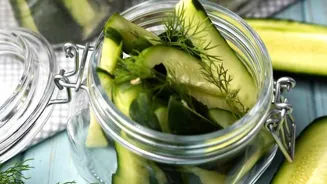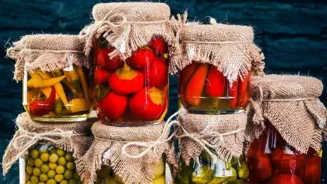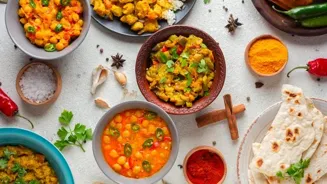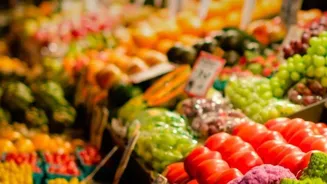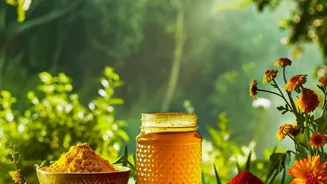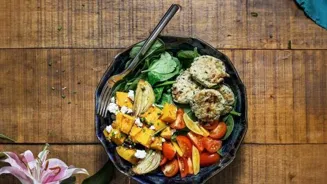Dive into the vibrant world of Indian pickles: learn about varieties, recipes, and pairing ideas that elevate dining experiences
India, a land of diverse cultures and traditions, is also renowned for its
vibrant culinary landscape. Among the many delicacies that grace the Indian table, pickles, or achaars, hold a special place.
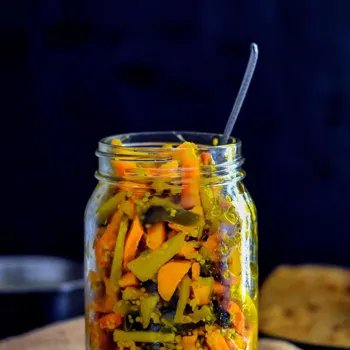
These tangy, spicy, and often sweet condiments are an integral part of Indian cuisine, adding a burst of flavour to every meal.
From the sun-drenched fields of Rajasthan to the verdant hills of Kerala, each region boasts its unique variety of pickles, reflecting the local produce and culinary preferences.
This ultimate guide will delve into the fascinating world of Indian pickles, exploring their diverse varieties, easy-to-follow recipes, and delightful pairing ideas that will elevate your dining experience.
Indian pickles: diverse flavors, regional specialties, spice explosion
One of the most captivating aspects of Indian pickles is their sheer variety. The type of pickle available changes depending on regional availability. You'll find mango pickles made with raw mangoes dominating the north.
Similarly, lemon pickles, also known as nimbu ka achaar, offer a citrusy zing that complements a wide array of dishes. In the south, you will witness the spicy gongura pickles, where the flavour is derived from its distinct sour taste of the sorrel leaves.
One can find vegetable pickles like carrot, cauliflower, and radish, which are seasoned with a blend of spices like mustard seeds, turmeric, and chili powder, creating a flavour explosion in every bite.
From sweet to spicy, tangy to umami, Indian pickles cater to a wide range of palates, making them a beloved staple in every Indian household.
Making Indian pickles at home involves preserving fruits/vegetables in oil, salt, spices
Making your own Indian pickles at home is surprisingly easy and rewarding. The basic principle involves preserving fruits or vegetables in oil, salt, and spices. The ingredients vary depending on the type of pickle you want to make.
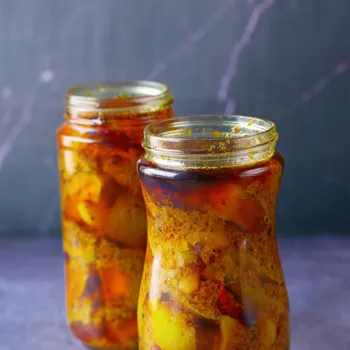
For a classic mango pickle, you'll need raw mangoes, mustard oil, fenugreek seeds, mustard seeds, turmeric powder, chili powder, and salt. The mangoes are first cut into small pieces and then mixed with the spices.
The mixture is then stored in a sterilized glass jar and left to mature in the sun for a few days. This allows the flavours to meld together, creating a delicious and tangy pickle. Similarly, lemon pickles are made by marinating lemon pieces in salt, spices, and lemon juice.
The mixture is then exposed to sunlight for several weeks, resulting in a soft and flavourful pickle. Experiment with different recipes and spice combinations to discover your own signature pickle.
Remember to always use fresh ingredients and sterilize your jars to ensure the pickles are safe to consume and have a longer shelf life.
Indian pickles offer health benefits with probiotics, vitamins, but high in sodium
Indian pickles offer more than just a burst of flavor; they also offer a range of health benefits. Many traditional recipes call for using spices like turmeric. Turmeric has anti-inflammatory properties. Fermented pickles are beneficial when they are prepared using traditional methods and spices.
They are a rich source of probiotics. Probiotics can aid the improvement of gut health. Certain vegetables and fruits, when pickled, retain some of their nutritional content, providing a source of vitamins and minerals.
It is important to note that pickles are generally high in sodium due to the use of salt as a preservative. So, it is vital to consume them in moderation as part of a balanced diet.
Indian pickles elevate dishes with flavor and texture
The versatility of Indian pickles extends beyond being a simple side dish. They can be paired with a wide range of dishes to enhance their flavour and create a more satisfying meal. For example, mango pickles taste wonderful with hot parathas or rotis.
Imagine breaking off a piece of paratha, dipping it into the mango pickle, and savouring the combination of textures and flavours. Lemon pickles complement simple rice and dal, adding a tangy twist to the meal.
Spicy vegetable pickles can be served with curd rice to balance the richness of the yogurt. Pickles can also be used as ingredients in cooking. A spoonful of mango pickle paste can add richness to a curry. You can also use lemon pickle to add a tangy note to salad dressing.
A little bit of pickle chutney can be used as a spread on sandwiches or wraps.
Indian pickles: a culinary tradition linking generations and culture
Indian pickles are more than just food, they're an important part of India's cultural history. Every home in India values pickles. The traditional methods of making pickles have been passed down through generations.
These methods make sure that the pickles retain their authentic flavours and nutritional qualities. The process of making pickles is usually performed by the family. It is a time for bonding and sharing stories. Many families use their secret recipes.
They keep their recipes hidden to make their pickles even more special. When you eat a homemade pickle made using secret family recipes, you are not eating just food; you are participating in an age-old tradition. This tradition links you to your ancestors and to the rich cultural history of India.
So, the next time you enjoy Indian pickles, remember that you are experiencing a culinary journey that has been evolving for centuries. And remember that you are savouring a taste of India's rich and diverse heritage.

